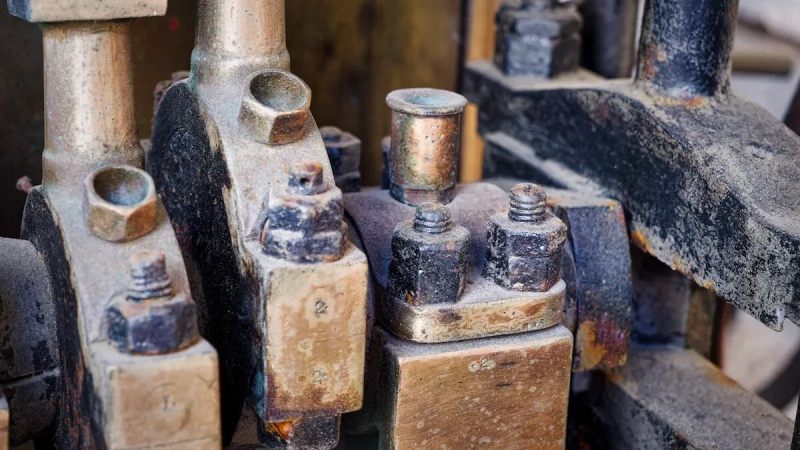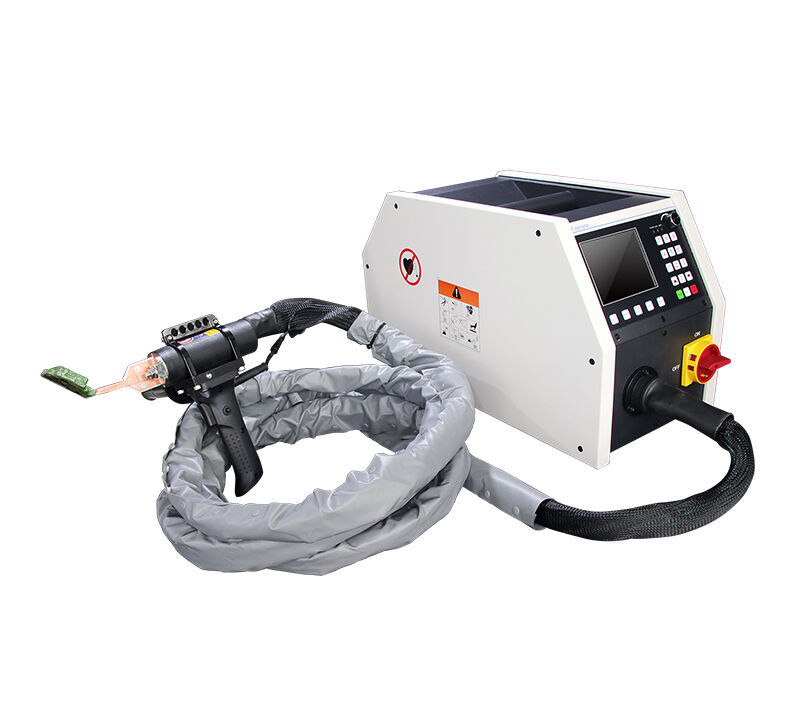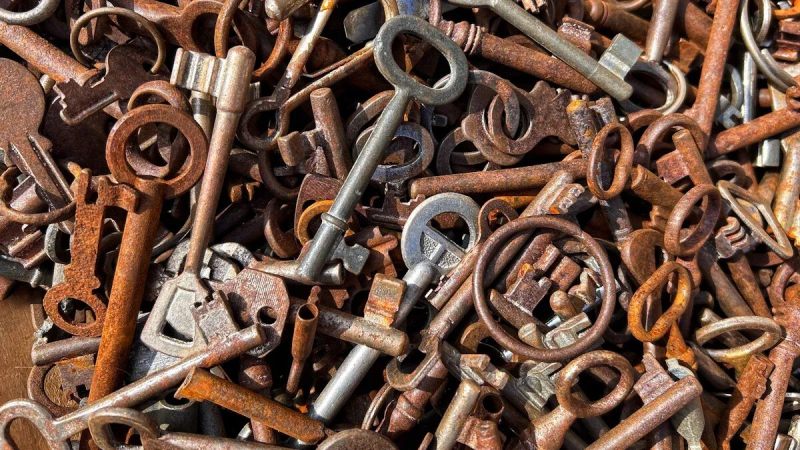

You can take out rusted bolts fast and safe with an induction heater tool like Canroon. When you get your workspace ready, put heat right on the bolt, and take it out, you do not use open flames and you make fire less likely. You finish quicker than using a torch, and you keep nearby parts safe from harm. Make sure to do each step slowly for the best results.
Tip: Always wear the right safety gear before you begin.
Key Takeaways
Induction heater tools, such as Canroon, help take out rusted bolts safely. They do not use open flames, so there is less chance of fire.
Always wear safety gear like goggles and gloves. This keeps you safe from burns and electric shock.
Get your workspace ready by moving away things that can catch fire. Make sure the area is bright so you can see well.
Heat the bolt for 5 to 15 seconds until it turns red. Then put on some penetrating oil to help loosen the bolt.
If the bolt still will not move, heat and cool it again. Do this a few times to break the rust bond.
What is an Induction Heater Tool?
An induction heater tool helps take out rusted bolts with heat. It uses electromagnetic induction to warm up metal fast and safely. You do not need a flame, so fire is less likely in your workspace. Many workers pick brands like Canroon because these tools work well and are trusted.
How Induction Heating Works
Induction heating makes a magnetic field around the bolt. The tool has a few main parts that work together. The rectification part changes AC power into DC. The converter part turns DC into high-frequency AC. The output part, with the coil and transformer, makes the magnetic field to heat the bolt. The control part lets you use digital controls to manage the tool.
Here is a simple table to show how induction heating works:
Induction heating helps loosen rusted bolts because heat breaks the rust’s hold. This method lets you control the temperature well, so you work fast and do not overheat things.
Benefits Over Traditional Methods
When you use an induction heater tool, you get many good things compared to a torch:
You do not use a flame, so fire is less likely.
The tool heats only the bolt, so other parts stay safe.
Induction heating does not make smoke or fumes, so it is better for the air.
You get quick, focused heat, which saves time and energy.
The process uses up to 90% of energy for heat, so it works very well.
Note: Using a torch can start fires and hurt things nearby. Induction heating is safer and cleaner for taking out rusted bolts.
Safety Tips for Induction Heater Tool

Being safe is the most important thing when using an induction heater tool. You must protect yourself, your workspace, and your equipment. Tools like Canroon do not use open flames, but you still need to follow safety rules.
Personal Protective Equipment
Always put on the right gear before you begin. This helps stop burns and electric shock. Here is what you should wear:
Safety glasses or goggles keep your eyes safe from sparks.
Heat-resistant gloves protect your hands from hot metal.
Long-sleeve shirts and pants cover your skin.
Insulated shoes help lower the chance of electric shock.
Tip: Never forget your safety gear, even if you feel sure of yourself.
Workspace Preparation
A safe workspace helps stop accidents. Remove anything that can catch fire, like paper or cloth. Make sure your area is dry and has good light. Keep a fire extinguisher close by, just in case. Put up signs to warn about strong magnetic fields, especially if someone has a medical implant.
Here is a table that shows common dangers and how to avoid them:
Monitoring Heat and Avoiding Damage
You must watch the heat all the time. Induction heaters work fast, so bolts get hot quickly. Do not let the bolt get too hot, or you could hurt other parts. Use thermal tape to protect surfaces and check that everything is tight. Check the coils and sealing strips often to keep out dust and water.
Note: Induction heating does not use an open flame. This makes fire less likely and keeps your workspace safer than using a torch. You also keep things like plastic pipes or insulation safe from heat.
How to Remove Rusted Bolts

Removing rusted bolts with an induction heater tool helps you work faster and safer. You can break free rusted bolts without using flames or risking damage to nearby parts. Follow these steps to get the best results.
Preparing the Bolt and Area
Start by getting your workspace ready. Clear away any flammable materials like paper or cloth. Make sure the area is dry and well-lit. Put on your safety gear, including gloves, goggles, and long sleeves. Inspect the bolt and the surrounding area. If you see dirt or loose rust, use a wire brush to clean it off. This helps the induction heater tool work better.
Tip: If you need to remove stubborn hardware, check for any plastic or rubber parts near the bolt. Cover them with thermal tape to protect them from heat.
Using the Induction Heater Tool
You need to set up the induction heater tool correctly to heat the bolt. Use the right coil for your bolt size. The coil should fit snugly around the bolt with a small gap. This helps you heat the bolt quickly and evenly.
Here is a step-by-step guide for coil placement and heating:
Pick a coil that fits closely around the bolt, leaving a small gap.
Make sure the induction heater tool is off before you install the coil.
Insert the coil fully into the tool’s ports for a secure connection.
Secure the coil so it does not move during heating.
Turn on the induction heater tool and apply heat for 5 to 15 seconds.
Check if the bolt has loosened. Repeat heating if needed.
Heating up a rusty nut or bolt usually takes about 10 to 12 seconds for a 5/8" bolt. You want the metal to reach a cherry red color. This means the bolt is hot enough to expand and break the rust’s grip.
Note: Do not overheat the bolt. Too much heat can damage the engine block or crack the casting. Always focus the heat on the bolt, not the surrounding parts.
Applying Penetrating Oil
After you heat the bolt, let it cool for a few seconds. Then, spray a good penetrating oil onto the threads. The heat helps the oil seep into tight spaces. This makes it easier to remove frozen body mount bolts and other stuck hardware. Some oils work better than WD40, so choose a product made for rust removal.
Tip: Use a brush or small tool to help the oil reach deep into the threads.
Removing the Heated Bolt
Once you apply the oil, use a wrench or socket to turn the bolt. The heat and oil should help you break free rusted bolts with less force. If the bolt does not move, repeat the heating and oil steps. Work slowly and check for signs of damage. If you see cracks or melted parts, stop and let everything cool down.
Here is a table to help you avoid common mistakes:
⚠️ Always watch the bolt while heating. Localized heating can cause problems if you do not control the temperature.
By following these steps, you can remove rusted bolts safely and quickly. The induction heater tool helps you avoid flames and keeps your workspace clean. You can remove stubborn hardware and frozen body mount bolts with less risk of damage.
Troubleshooting Rusted Bolts Removal
Bolt Won’t Loosen
Sometimes, a rusted bolt stays stuck even after you heat it with an induction heater tool. You may wonder why this happens. The way induction heating works can affect the results. The outside of the bolt heats up first, which helps loosen the joint. The inside may not get as hot, so rust can still hold tight. Heating and cooling cycles help break the rust bond. You can heat the bolt until it glows red, then let it cool down. This process can make the metal expand and contract, which helps crack the rust. Applying penetrating oil after heating also helps the oil reach deeper.
Here is a table that shows why bolts may not loosen and what you can do:
Tip: If the bolt does not move, repeat the heating and cooling steps. Patience helps you avoid breaking the bolt.
Tool Not Heating
If your induction heater tool does not heat the bolt, check a few things. You may need a higher wattage tool for tough jobs. Make sure the power cord and connections work well. Look at the coil and see if it fits the bolt tightly. If the tool still does not heat, try another method. You can use a map torch or a mini butane torch, but only if your workspace allows open flames.
Use a higher wattage induction heater for better results.
Check power supply and tool components.
Try alternative heating methods if needed.
⚡ Always inspect your tool before you start. A working tool saves you time and effort.
Preventing Material Damage
You want to protect nearby materials when you use an induction heater tool. Tools like the VEVOR Induction Heater do not use flames, so fire risk drops. You do not need water cooling, which keeps water away from sensitive parts. Many induction heaters have built-in cooling fans. These fans help keep heat-sensitive components safe.
Choose flame-free induction heaters to lower fire hazards.
Avoid water cooling to prevent water damage.
Use tools with cooling fans to protect nearby materials.
Note: Cover plastic or rubber parts with thermal tape. This simple step keeps them safe from heat.
When you use a Canroon induction heater tool, you get quick and safe results. The tool heats just the metal bolt, not other things. It works in only a few seconds. Your workspace stays clean because there are no flames or smoke.
You should always wear your safety gear before you start. Check your machine to make sure it works right. Follow each step in the instructions. You can get help any time if you need it. There is a full warranty and customer service all day and night. Pick induction heating for easy and safe bolt removal without fire.
FAQ
How long should you heat a rusted bolt with an induction heater tool?
You should heat a rusted bolt for 5 to 15 seconds. Watch for a cherry red color. Stop heating if the bolt starts to glow. Overheating can damage nearby parts.
Can you use an induction heater tool on bolts near plastic or rubber?
Yes, you can use the tool near plastic or rubber. Cover these parts with thermal tape. This protects them from heat. Always check for damage after heating.
What safety gear do you need when using an induction heater tool?
You need safety glasses, heat-resistant gloves, long sleeves, and insulated shoes. This gear protects you from burns and electric shock. Never skip safety gear.
Why is induction heating safer than using a torch?
Induction heating does not use an open flame. You lower the risk of fire. You also avoid smoke and fumes. The heat stays focused on the bolt.
What should you do if the bolt does not loosen after heating?
Try heating and cooling the bolt again. Apply penetrating oil after each cycle. Use a wrench to turn the bolt gently. Repeat the process until the bolt loosens.
Previous:
Next:
Sign up for updates
